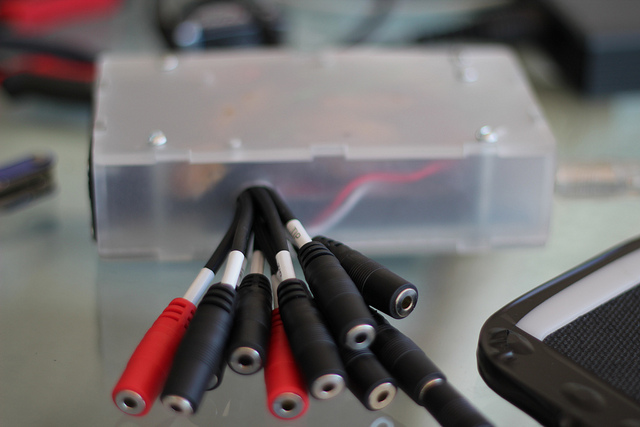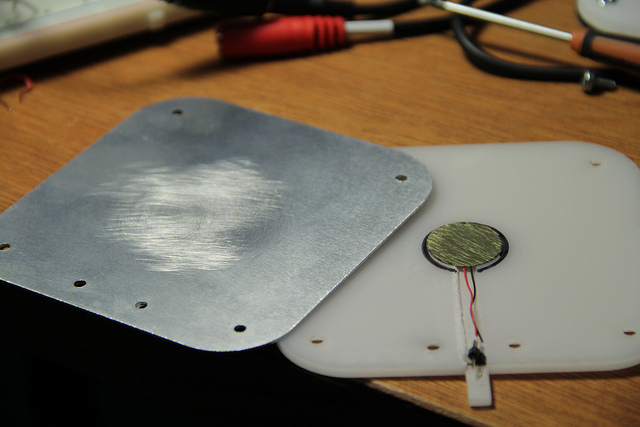Music made by machines need not turn its back on traditional musical skill – least of all when you literally strap the machines on the back of a master musician. In a fusion of Brazilian tradition and modern wireless, wearable sensor technology, Kyle McDonald shares with us a project that makes drums into an interactive suit.
Kyle has plenty to say, including all the details on how to do this in case it inspires a project of your own, so I’ll let him take it away:
The project is a wireless drum suit that I built with Lucas Werthein for a popular Brazilian musician named Carlinhos Brown.
Brown wanted to try something experimental — which is relevant because it’s probably one of the first alternative interfaces anyone
in this city has ever seen. Salvador might be one of the biggest open air-festivals ever, but it’s full of traditional music and the local
pop music (“axé”). Nothing but the usual guitars and drums, and some Bahian + Brazilian instruments.
The system is based on a multilayer, laser-cut design we developed:
It uses acrylic, metal, rubber, and piezos to create a really solid module that feels nice to the touch. I’ve always been annoyed with the
force required to hit something like an [M-Audio] Trigger Finger or an Akai pad, and I was pleasantly surprised to find that if you build your own, you can really get that bottom end to be super sensitive. They probably just pull it up in commercial devices to avoid triggering from
shaking, or cross talk.The pads run to the brain via 1/8″ cables. The brain is about the size of an Arduino Mega + 1 9V battery, and also laser-cut acrylic:


The Arduino Mega is then connected to a MIDI shield from Sparkfun, which goes to a CME WIDI wireless MIDI device that was surprisingly more robust than the more expensive Kenton MIDI device we tried.
I had a ton of fun making this, and we’re planning on open-sourcing the design for the pads so other people can build them.

